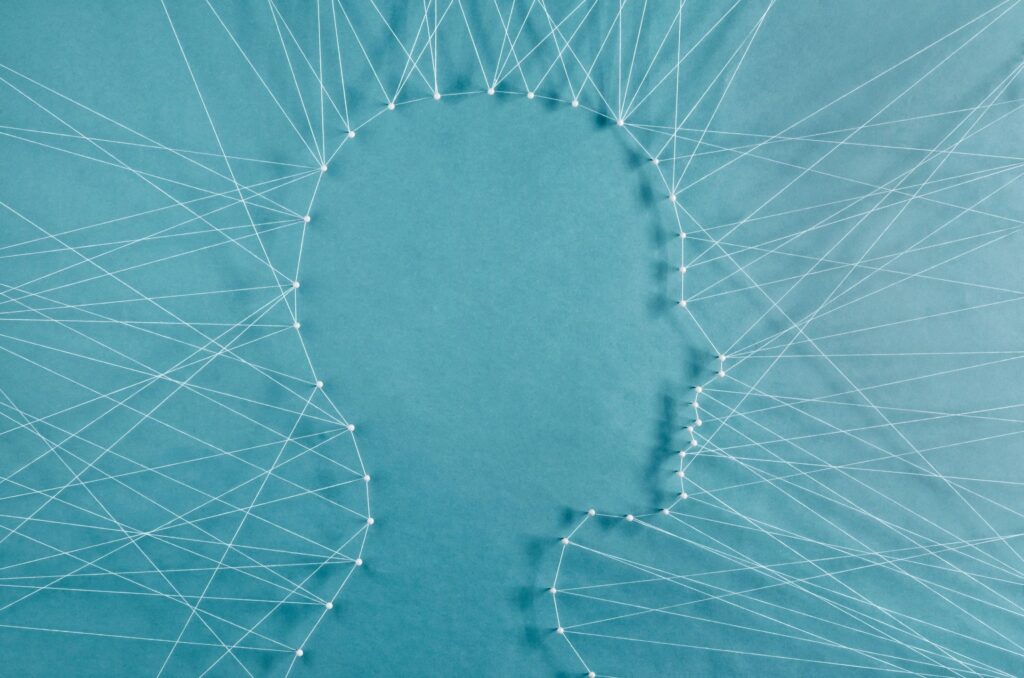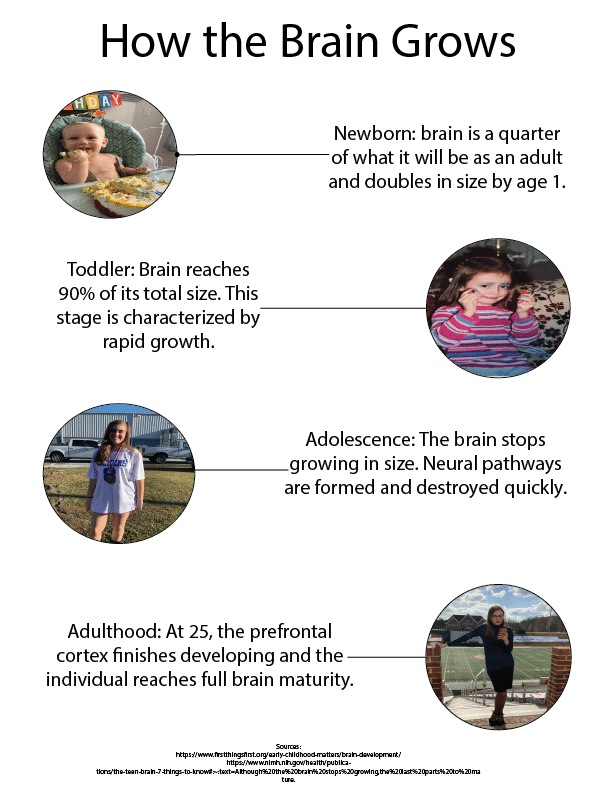
Toddlers 2.0
Leah Williamson, Contributing Writer
Watching your friends in college is a fascinating pastime. Sometimes they are true academics who are logical and create fully formed, mature ideas. On the other hand, those same friends can also act like impulsive, emotionally driven little children. This shows that there is a disconnect in college students’ emotions and logic.
Oddly enough, this disconnect is real and is similar to another developmental age range that we all know too well. Toddlers. Yes, you heard that right, college student’s brains function like toddlerhood 2.0.
The outlandish impulses that are seen in college students from the party culture to the climbing onto the college gym roof are the adolescent version of toddlers throwing a tantrum and smacking you in the face with their raincoats.
Shannon Dobson, chair of the psychology department at North Greenville University, explains that the connections in the brain form and sever as people mature. Some stages of life, like toddlerhood and adolescence, are marked by more of these disconnects than others.
The cause of this separation in emotion and logic is a loss of connection between the amygdala and the prefrontal cortex. The amygdala is the part of the brain that processes our emotions and the prefrontal cortex is the part of the brain that controls memory and logic.
What’s the difference between toddlers and college students? College students have more life experiences and, therefore, maturity than their toddler counterparts. College students have also had the opportunity for their brains to develop during childhood which is a luxury that toddlers do not have.
The stark differences in the behaviors of college students between when they are driven by their amygdala and prefrontal cortex has been heightened by the depiction of college students in media. Most students are either portrayed as rational and academically gifted with no social life or they are a drunken partier drowning in beer and uncontrollably sobbing over their ex who has a new significant other.
While this disconnect and impulsive behavior gave students a bad reputation over the years, an article titled What neuroscience tells us about the teenage brain explains that this impulsive behavior is actually beneficial in the long run.
Dobson states that recent studies conducted by psychologists, and mentioned in the article, have shown that the lack of connections in the brain allows students to have flexibility in their lives. This flexibility is by being open to things and ideas that they might otherwise ignore in a more mature state.
Think about this for a second, there are many college students out there who have changed their majors because they took a class out of their comfort-zone and ended up loving it. They chose to take a class instead of sticking to the ridged confines of their original major’s course requirements.
While this is a positive aspect of the brains of college students, it would be amiss to not acknowledge the more traditional negatives to this debate as well. The impulsive decisions often made in the adolescent college students’ minds like drinking and speeding can cause serious or fatal mistakes. Because of the disconnect between emotion and logic, students might not think about the potential consequences of their actions and instead rely solely on their emotional impulses in making their decisions.
Another negative aspect of brain development is trauma. Dobson said, “trauma may change the brain.” Ongoing studies are showing that traumatic experiences have negative effects on the brain development of college students and that some of these effects can be permanent.
If a student experiences a traumatic event while their brain is forming vital connections, these connections may be altered or destroyed. This means that those who have experienced trauma like sexual assault have brains that are physically wired differently from those who have not experienced those traumatic events.
The normal age-range for this phase of brain development is referred to as emerging adulthood. The age range associated with this stage is 18 to 25 years old. This doesn’t mean that at age 25 a person’s brain magically makes all the connections and stops acting irrationally. On the other hand, it doesn’t mean that the brain disconnects and a student starts acting erratically.
Each person will advance through this stage at different times in their life. Circumstances play a key factor in brain development. College campus life is like living in a bubble. Schedules are flexible to a certain extent and meals are provided. Many college students are living with friends on campus using mom and dad’s dime.
The only responsibility is studying and, for some, sports. There is a newfound freedom of being able to make decisions without parental supervision. This might cause them to not mature as quickly as their counterparts who are married or living on their own and supporting themselves.
For the students who are married or forced to work their way through their college careers to make ends meet, they are forced to deal with harsher realities of life sooner. These students must think about paying for rent, car insurance, groceries, and college tuition.
For the married students they are faced with adjusting to married life and the conflicts of blending together two different lives. This means that these married and self-sustaining students might experience faster brain development because of their life circumstances.
Because each student has their own life experiences and rate of brain development, every student doesn’t hit a developmental milestone at a set age. However, Dobson says that most college students’ brains make their connections at around the ages of 22 or 23.
So, for seniors who are looking back at their freshman year selves thinking that they were an entirely different person, they were to an extent. But they don’t look at their younger self with disdain. They must look at the past with pride as stepping stones to who they are now.

